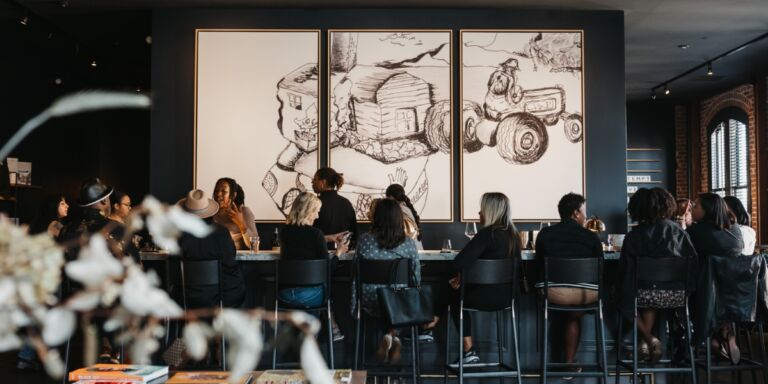Of all the casualties of lockdown, Champagne has fared particularly badly. For the last three months, headlines have been unvaryingly negative. Perhaps the Telegraph summed it up best: “Champagne sales plummet as world in no mood for festive fizz under lockdown.”
Sales have indeed plummeted – a drop of up to 75% is predicted for the second quarter of this year. Champagne’s ruling body the CIVC predicts 100m fewer bottles will be sold in 2020 – 35 per cent down for the year. To put this into perspective, in the two worst years for sales to date, 1974 and 2000 (the latter after the orgy of consumption for the Millennium), the drops were 15 percent and 22 per cent respectively.
But the Champenois are resilient. As Thibaut Le Mailloux of the CIVC told Club Oenologique, “We have experienced phylloxera, and the great depression, and the World Wars, the financial crisis… every time Champagne has come out of it better than before.”
Main image: Clovis Taittinger, photographed by Erol Gurian.
Champagne’s ruling body predicts 100m fewer bottles will be sold in 2020
Some of the grandes marques suspended their wider sales communications as the crisis reached its peak (the CIVC gave its members advice as to what sort of publicity would be acceptable). At Champagne Louis Roederer, the decision was taken to stop all sales-led communication. “[Owner] Frédéric Rouzaud and the team felt it was inappropriate to be promoting a luxury product at a time when people were losing their loved ones, and livelihoods, to the virus,” the house’s UK spokesperson said.
There may have been few heavy-hitting promotions but there’s been little let-up in prestige cuvée releases. Champagne Gosset recently launched its Brut 12 Ans De Cave a Minima in a limited edition of 12,000 bottles. “True premium and luxury items always benefit from times of crisis”, chef de cave Odilon de Varine said.
Champagne Ayala (Bollinger’s “little sister”) has released its Ayala N°7 as a celebration of its 160th anniversary; Charles Heidsieck 2012 was launched earlier this month, and Billecart-Salmon’s Cuvée Louis 2007 Blanc des Blancs is just out. Bollinger has an “important” new launch planned (it will be the first permanent addition to the range since the Rosé in 2008) and Dom Pérignon 2010 is imminent.
At some levels of course, Champagne is immune to recession and crisis. Corney & Barrow, for example, has just sold out of a special €7,500 offer from Champagne Salon: a case containing a magnum of the very scarce 2008 and six bottles of special disgorgements of 2007, 06 and 04. “It took us all by surprise,” buyer Rebecca Palmer said. The merchant will release another 100 cases at the end of the summer and expects them to go like hot cakes – especially to Japan, Palmer says.

You might almost think it’s a case of “Crisis? What crisis?”, though there is also a nagging feeling that the pandemic is somewhat different in nature to others that the region has weathered.
“Of course we are very badly affected, as is the whole of Champagne. This is emphatically not ‘business as usual’,” Clovis Taittinger, global head of marketing of his family house said. But, he added, continuity is key. “We are a luxury product not because we are a Champagne but because of our practices – we have 100 years of authenticity behind us and we will continue to be authentic. Is the crisis a stimulus for progress? Probably, but it’s not the only stimulus. Progress has been a consistent and key driver of our appellation for decades: we’re not just discovering it.”
It’s far too early to say what effect the pandemic will have on the luxury goods market as a whole, but there are indications that consumers will be placing increased value on provenance and “authenticity”. “Being more aware of provenance was a trend that had been creeping in for some years and the pandemic has definitely sharpened the focus,” said Nick Baker, managing director of high-end online Champagne retailer The Finest Bubble. “We’re seeing more enquiries about farming techniques, packaging – everything to do with sustainability and responsibility.”
This puts producers like Champagne Ruinart in a strong position. In February, the LVMH-owned house launched its “second skin” bottle case, made of recycled wood fibres and nine times lighter than conventional packaging, as well as a raft of other environmental measures. Chef de cave Frédéric Panaïotis said, “It’s good timing – we didn’t plan it of course but now more than ever, people appreciate that gifting has to be done in a different way.”


Other houses sensing an opportunity in the crisis are the smaller (or grower) Champagnes, who have always emphasised the artisanal nature of their product, the concentration on small parcels, terroir and long ageing. “It’s a bad situation that has created good things for us,” said Rodolphe Frerejean of Frerejean Frères, which produces 120,000 bottles from grand cru terroirs. “We have a connection with new consumers and we’re in a good position. The popularity of artisan Champagnes is a ten-year trend – and even more so today, people want to see behind the brand.”
At The Finest Bubble, which sells £2.5m of Champagne a year, Baker says the burgeoning constituency of grower-Champagne fans has been boosted over the last three months, particularly by social media, with bloggers such as Peter Crawford and his “A la Volée” Instagram feed leading the charge. “There’s a lot more noise out there now.”
For Baker, a champion of smaller producers, as opposed to what he calls “occasion Champagnes”, this fits nicely with his mission. “Champagne is a very established market and a huge part of it is linked to occasions. We are trying to disentangle that.”
Champagne will certainly survive – it always does – but there’s a sector of the venerable region that has found a powerful new voice.






